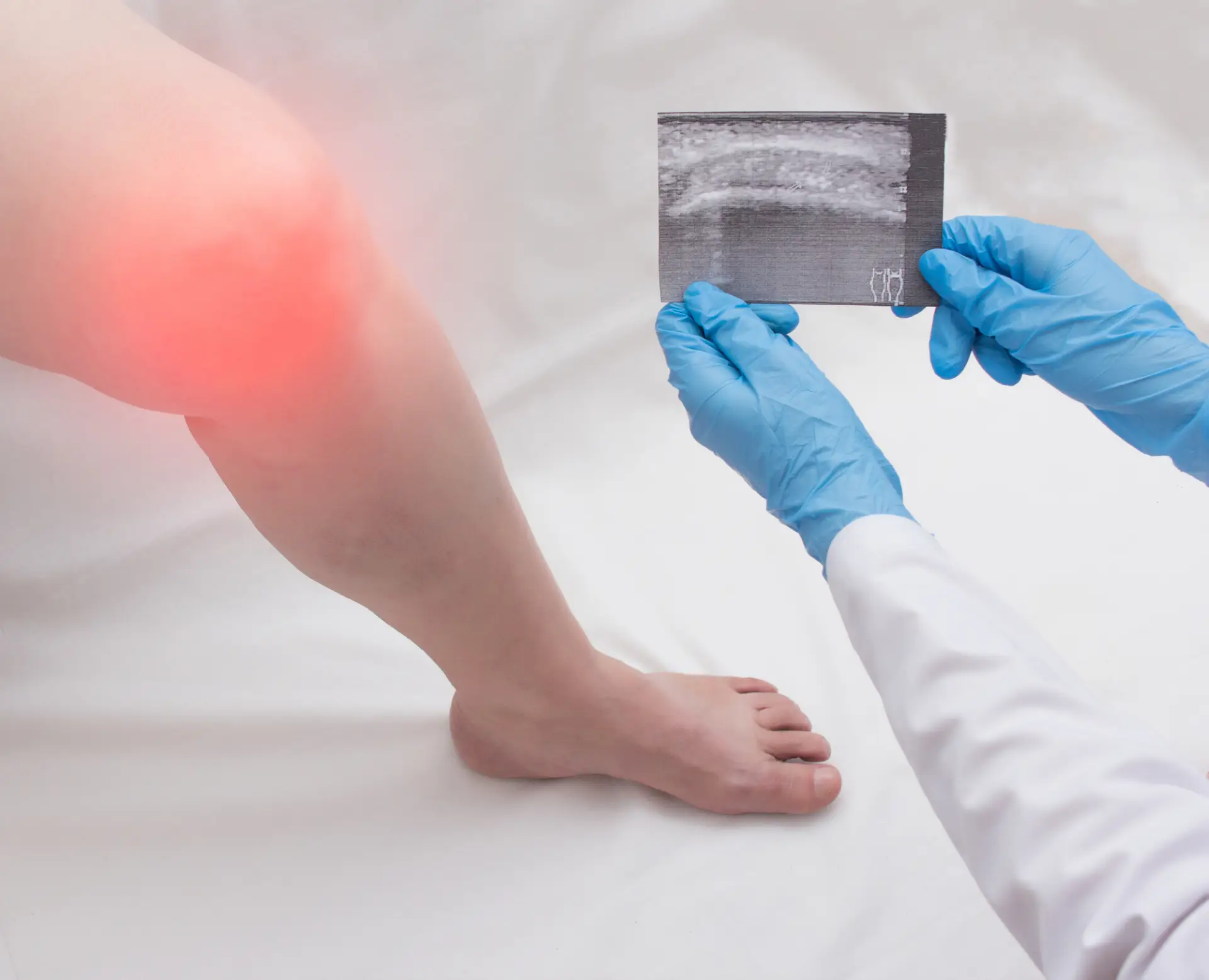Bursae are saclike structures filled with fluid located around the shoulder, hip, knee, elbow, and heel, acting as cushions and preventing frictional damage during the movement.
Pes anserine bursitis is characterized by the inflammation of the bursa between the tibia and three tendons of the hamstring muscle inside the knee. The condition is due to the excessive stress exerted on the bursa, causing it to produce excessive fluid and swell, exerting undue pressure on the adjacent knee parts.
The most common symptoms of Pes anserine bursitis or goosefoot bursitis include pain and tenderness on the inner side of the knee.
Causes of Pes Anserine Bursitis
Pes anserine bursitis is a condition that directly impacts day-to-day activities. Here are the possible causes for the condition:
- Repetitive stress on the knee joint due to physical activities like running, jumping, or frequent knee bending.
- Imbalances in the muscle surrounding the knee
- Poor biomechanics, such as improper walking pattern, flat feet, or overpronation
- Obesity causes excess weight on the knee joints, leading to Pes anserine bursitis
- Direct injury to the knee
Symptoms of Pes Anserine Bursitis
Below are the common symptoms of pes anserine bursitis. Diagnosing the symptoms early is crucial for effective treatment.
- Pain on the inner side of the knee
- Swelling and tenderness on the knee joint
- Stiffness in the Knee
- Increased pain at night
- Pain aggravated by specific activities like climbing stairs, running, cycling, or standing up from a seated position
- Limited range of motion in the knee
Diagnosis of Pes Anserine Bursitis
Pes Anserine Bursitis can be accurately diagnosed through a comprehensive process involving medical history assessment, physical examination, and targeted diagnostic tests.
- Medical History Assessment: Evaluating the onset, nature, and location of symptoms to analyze the condition’s root cause.
- Physical Examination: Examining the inner knee for symptoms like tenderness, swelling, and warmth.
- Imaging Studies: X-rays to assess bones and joint space and MRI for detailed images of soft tissues, including the bursa.
- Ultrasound: Non-invasive imaging to visualize the pes anserine bursa in real time.
- Blood Tests: Rule out inflammatory conditions through blood markers.
- Aspiration of Bursa Fluid: If necessary, withdraw fluid from the bursa for analysis, confirming inflammation.
Treatment options for Pes Anserine Bursitis
Pes Anserine Bursitis, though often challenging, can be managed effectively with a combination of conservative treatments. Here are the comprehensive treatments available to treat pes anserine bursitis:
- Rest and Activity Modification: Give the affected knee adequate time to rest. Modify or avoid activities that worsen symptoms, such as climbing stairs or prolonged sitting.
- Ice and Heat Therapy: Apply ice packs to reduce inflammation and numb the area. Use heat therapy to relax the muscles and promote blood flow.
- Nonsteroidal Anti-Inflammatory Drugs (NSAIDs): Over-the-counter NSAIDs like ibuprofen can help reduce pain and reduce inflammation. Follow the healthcare provider’s recommendations for dosage and duration.
- Physical Therapy: Engage in a personalized physical therapy program to address muscle imbalances, improve knee biomechanics, and enhance flexibility. Strengthening exercises for the quadriceps, hamstrings, and hip muscles can be particularly beneficial.
- Bracing and Support: Utilize knee braces or supports to provide stability and reduce stress on the pes anserine bursa. Ensure proper fitting and consult with a healthcare professional for recommendations.
- Corticosteroid Injections: In some cases, healthcare providers may administer corticosteroid injections directly into the pes anserine bursa to reduce inflammation and pain. Limitations on the frequency of injections should be discussed with a healthcare professional.
- Ultrasound-Guided Aspiration: If there is significant fluid accumulation in the bursa, ultrasound-guided aspiration can help relieve pressure and reduce inflammation.
- Activity and Movement Modification: Adopt proper techniques for knee movement activities to prevent recurrence. Maintain a balanced exercise routine that includes low-impact activities like swimming or cycling.
- Weight Management: Maintain a healthy weight to reduce stress on the knee joint. Incorporate a well-balanced diet and regular exercise to support overall joint health.
- Surgical Intervention (For Exceptional Cases): In persistent or severe cases, surgical options, such as bursectomy, may be considered to remove the inflamed bursa. Surgery is typically a last resort when conservative measures prove ineffective.
Conclusion
At Asap Houston Chiro, we understand the impact pes anserine bursitis can have on your daily life. Our team of experts is dedicated to helping you manage your symptoms and improve your overall knee function.
We offer a variety of treatment options, including physical therapy, rest and ice, and the use of non-steroidal anti-inflammatory drugs (NSAIDs) to reduce pain and inflammation. Contact us today, if you are experiencing pain or stiffness in your knee.

